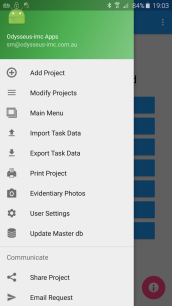PREMO (Performance, Risk, Engagement, Management, Outcomes) is a framework developed in the United Kingdom to be implemented in the Victorian Water sector. The framework is used to:
- Present the best service/price offer to customers in the business’ price submissions;
- Compare the price submission against the Commission’s expectations of a “standard” submission;
- Identify improvements required to achieve a grading higher than standard; and
- Avoid the types of activities that would lead the Commission to lower the rating.
The Commission expects that all submissions will meet the basic requirements of a standard submission.
“The basis of the PREMO framework is that the water business can adequately identify the outcomes of the community consultation and demonstrate that it has effectively captured customer views and considered and addressed these views.”
PREMO requires businesses to work with customers to develop a submission to the Essential Services Commission (ESC) that addresses:
- Risk;
- Engagement;
- Management; and
- Outcomes
PREMO also requires each water business to:
- Self-assess their submission against the four categories of:
- Leading
- Ambitious
- Standard
- Basic
- Involve the ESC to complete its assessment of the assessment;
- Allow the ESC to set the level of return; and
- Include ongoing monitoring of performance during the regulatory period.
PREMO IMPLEMENTATION STEPS
The steps involved in implementing PREMO in order include:
- Develop outcomes with your customer base;
- Involve customers to influence every aspect of the pricing submission;
- Submit proposals that
- Reduce the cost of service delivery and reduce prices faced by customers
- Accept more risk on behalf of customers
- Demonstrate a rigorous internal assessment process through a complete, accurate and consistent set of documents and supporting information that are independently validated and tested, and explicitly meet the requirements of the ESC and legislation
Detail of the implementation process and supporting case studies are provided in the KPMG document, “A practical application of the PREMO framework”.
POTENTIAL IMPACTS ON THE ASSET CLASS PLANS (ACPs)
Based on the ESC documents a way to address the requirements would be to:
- Incorporate all PREMO requirements in the submission; and use the ACPs as supporting documents showing alignment with PREMO requirements; or
- Alternatively, a summary explanatory document that represents all the ACPs could be produced to demonstrate the linkage with PREMO requirements and the pricing submission. This would include a discussion of the impacts identified in the table below.
The following table identifies the requirements if each ACP was to be modified.
| POTENTIAL IMPACTS | ACTION |
| The ACP should link to the PREMO framework. | In the introduction include a paragraph that links with PREMO and the outcomes. |
| The required outcomes will be defined in the pricing submission however, the asset class plans will need to demonstrate a link between the outcomes and the service levels identified in them. | Incorporate customer outcomes in the asset class plans; “Service Intent” after outcomes have been identified. Adjust performance indicators in levels of service tables to link to outcomes. Include a section identifying and discussing the annual performance of service levels against the Levels of Service table. |
| The customer requirements should be a driver in the demand section. | Include a section in the demand forecast that discusses the customer demands and influences on the authority’s outcomes. |
| Risk should be addressed more thoroughly in the Risk section | Include a section demonstrating a link to the Statement of Obligations. Infrastructure risk should be formalised in the ACP |
| Lifecycle analysis should be demonstrated in the ACP and supported by the business cases | A section on options analysis could be included in the lifecycle section. Include an analysis of a project as an example. |
| The financial section should include justification and explanation of the funding | Discuss the method of selecting projects and defining unit rates in the financial section Include in the financial forecast the key service outcomes each project is addressing. |
| Improvements to address PREMO framework are required. | Define the target category for PREMO and identify improvements to achieve it. |
References:
ESC – “Water Pricing Framework and Approach, Implementing PREMO from 2018”
ESC – “Assessing and rating PREMO price submissions”
KPMG – “A practical application of the PREMO framework”
KPMG – “Detailed sub-questions and lessons from the UK”
KPMG – “PREMO Assessment Tool”


